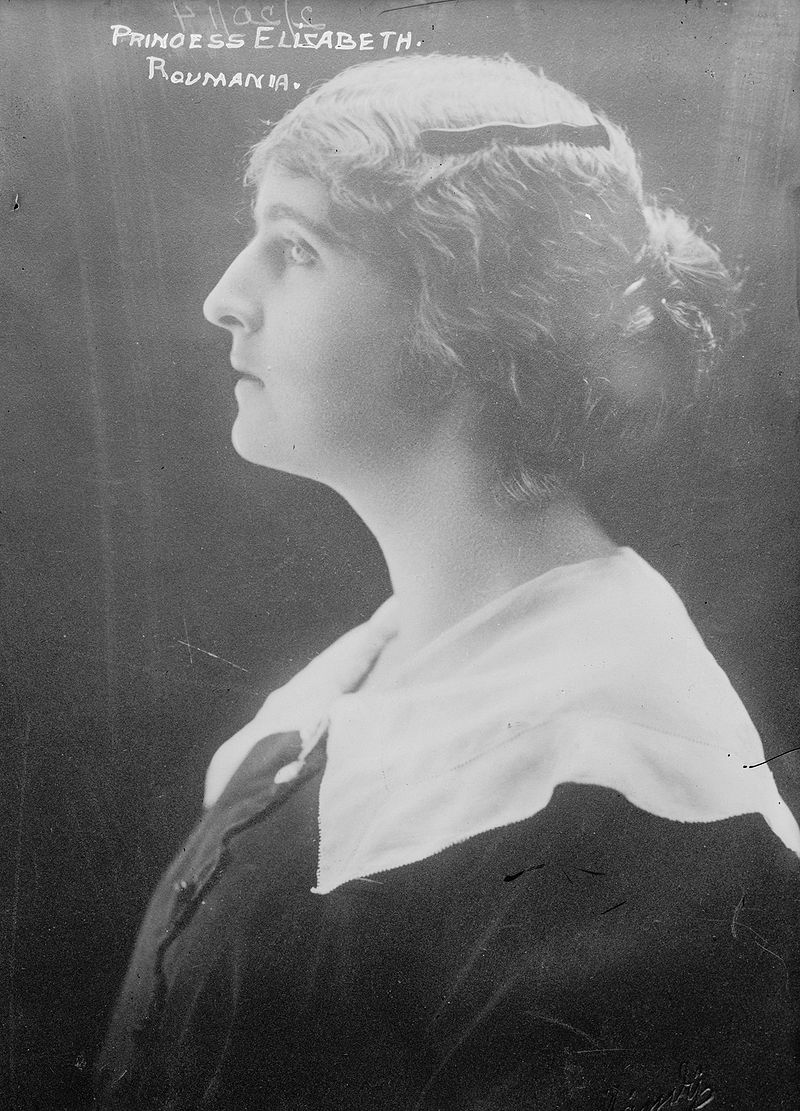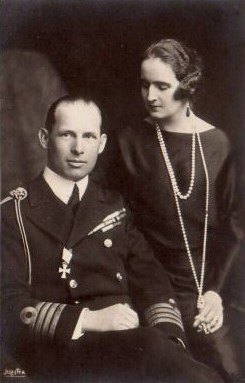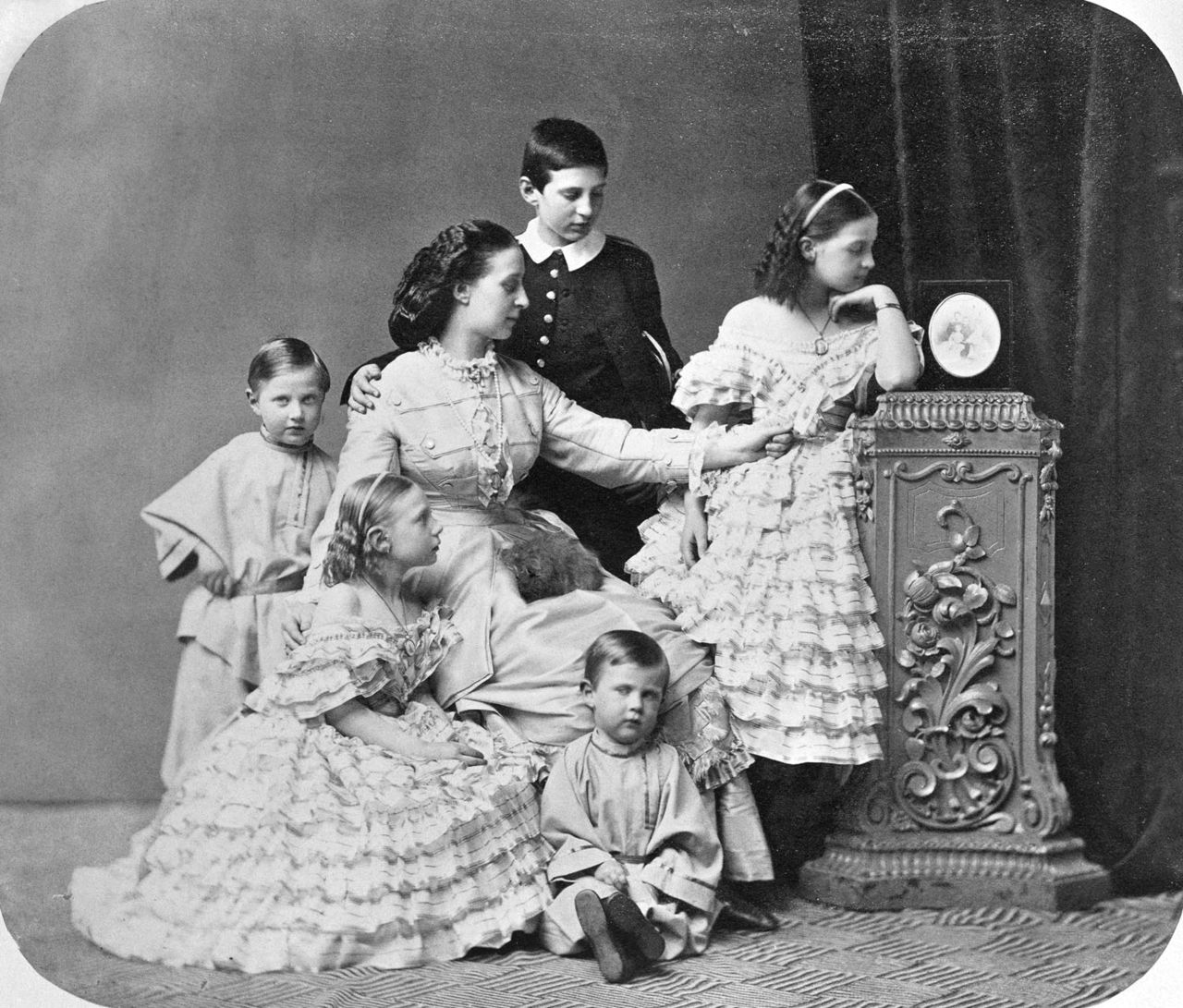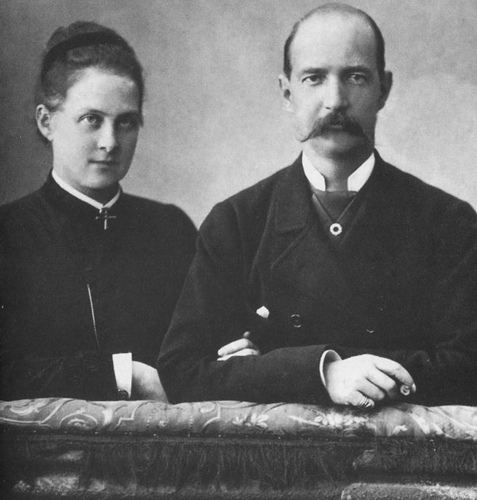by Scott Mehl © Unofficial Royalty 2016

King Alexander of the Hellenes; Credit – Wikipedia
Born on August 1, 1893, at Tatoi Palace near Athens, Greece, King Alexander was the second son of King Constantine I of the Hellenes and Princess Sophie of Prussia. He had five siblings:
- King George II of the Hellenes (1890 – 1947), married Princess Elisabeta of Romania, no children, divorced
- Princess Helen of Greece, Queen Mother of Romania (1896 – 1982), married King Carol II of Romania, had one son, divorced
- King Paul I of the Hellenes (1901 – 1964), married Princess Frederica of Hanover, had two daughters and one son
- Princess Irene of Greece, Duchess of Aosta (1904 – 1974), married Prince Aimone, Duke of Aosta, had one son
- Princess Katherine of Greece, The Lady Katherine Brandram (1913 – 2007), married Major Richard Brandram, had one son
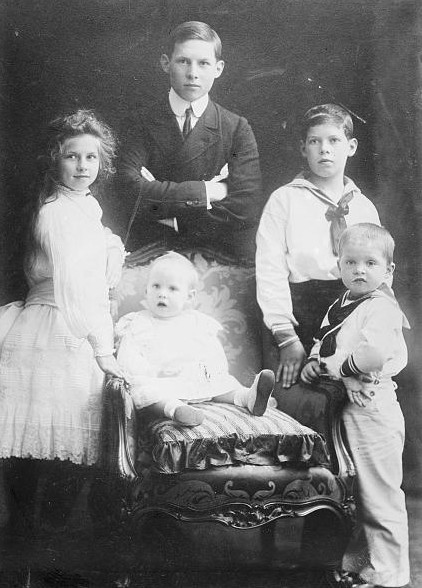
Alexander with four of his siblings, c1904. (l-r) Helen, Irene (in the chair), George, Alexander, and Paul. source: Wikipedia
Raised at the Royal Palace in Athens and Tatoi Palace, Alexander was educated in Greece, attending the Hellenic Military Academy and serving with the Greek forces. He saw combat during the Balkan Wars, and joined his father at the head of the Army of Thessaly, capturing the city of Thessaloniki in 1912.
On June 11, 1917, Alexander’s father was forced to give up his throne, agreeing to go into exile but not officially abdicating. The Allies wanted Greece to remain a monarchy but felt that Crown Prince George was too pro-German, and bypassed him. Alexander was then chosen to replace his father on the Greek throne. He took the oath of loyalty in the ballroom of the Royal Palace that same day, in the presence of his father, elder brother, and the Prime Minister. Two days later, his parents and siblings left Greece and settled in Switzerland. Alexander would not see his family again.

King Alexander of the Hellenes (left) with King Alexander I of Yugoslavia, at the Macedonian Front, 1918. source: Wikipedia
Just days later, Alexander was forced to name Eleftherios Venizelos as Prime Minister. Venizelos, the leader of the Liberal Party, held all the power, and Alexander was basically a prisoner in his own palace, merely acting as a puppet king. His few public appearances were usually visits to the Greek troops, including a visit to the Macedonian Front in 1918.
The day after becoming King, Alexander disclosed his relationship with an old childhood friend, Aspasia Manos. She was the daughter of Petros Manos, who had served as Master of the Horse to his father. They had become reacquainted in 1915 and began a secret romance. With Greece at war, King Constantine insisted that his son wait until the war was over before considering a possible engagement. However, Alexander’s separation from his family only brought him closer to Aspasia, and he decided to marry her. The Prime Minister was strongly against the idea, fearing that marriage to a native Greek would only bring about public support for the Greek Royal Family. Venizelos had hoped to arrange a marriage between Alexander and Princess Mary of the United Kingdom (daughter of King George V), which would help strengthen the relationship between the two countries. While there was little support at home, his father did support the match but wanted Alexander to wait.
Finally, after several failed attempts, Alexander and Aspasia were married secretly by a royal chaplain on November 17, 1919. When the Archbishop of Athens found out, the marriage became a major scandal. Under the terms of the constitution, permission from both the sovereign and the head of the Greek Orthodox Church was needed for any member of the royal family to marry.
At first, the marriage was kept secret, and Aspasia and her mother were permitted to move into the palace with Alexander. However, once it became public, she was forced to leave the country, eventually settling in Paris. Alexander was allowed to join her there under the guise of attending the Peace Conference and on the condition that she would not accompany him at any official functions.
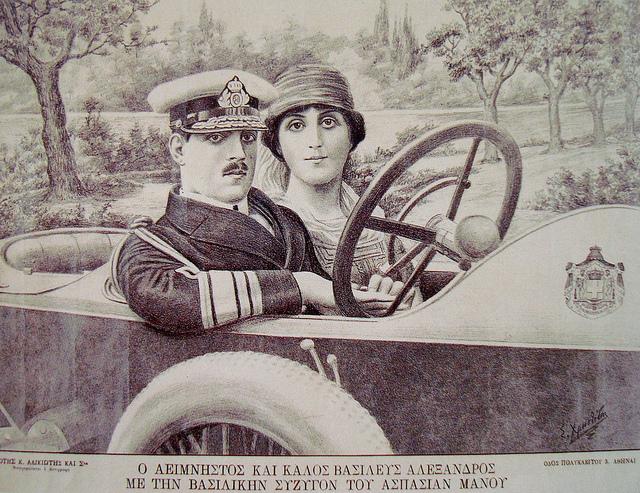
Alexander and Aspasia, 1920. source: Wikipedia
Eventually, Alexander and Aspasia were permitted to return to Greece. The marriage was legalized but Aspasia would not be recognized as Queen. Settled in at Tatoi Palace, Aspasia was soon pregnant with the couple’s only child who was born five months after her father’s death:
- Princess Alexandra of Greece (1921-1993), married King Peter II of Yugoslavia, had one son
One of Alexander’s last public appearances was in July 1920, when he visited the newly acquired territories of West Thrace. While there, the main town was renamed Alexandroupoli in his honor. Just a few months later, tragedy struck the Greek Royal Family. On October 2, 1920, King Alexander was bitten by a monkey while walking on the grounds of Tatoi Palace. Not thinking it was serious, he had the wound cleaned and dressed but it soon became infected. He soon developed septicemia and became delirious with a fever. Despite his pleas for his mother to be at his bedside, the government would not allow either of his parents to return to Greece. However, his grandmother Queen Olga was given permisson to come to Athens. King Alexander died on October 25, 1920, at the Royal Palace. Delayed by bad weather, Queen Olga did not arrive until two hours after his death.

Tomb of King Alexander. source: Wikipedia
King Alexander’s body lay in state at the Metropolitan Cathedral of the Annunciation in Athens, Greece until his funeral several days later. Queen Olga was the only member of the Greek royal family permitted to attend. Following the funeral, Alexander’s remains were interred at the Royal Cemetery at Tatoi. Interestingly, unlike the tombstones of his father and brothers, Alexander’s tombstone does not refer to him as King of the Hellenes. Because of the political circumstances that put him on the throne, none in the royal family considered his reign truly legitimate and treated it more like a regency. Alexander himself shared this feeling. His tombstone simply says ‘Alexander, son of the King of the Hellenes, Prince of Denmark.’
King Alexander’s death left the throne vacant, with the Greek Parliament wanting to pass the throne to another member of the Royal Family. The Parlament insisted that King Constantine and Crown Prince George be permanently banned from the line of succession. The throne was offered to Alexander’s younger brother Paul. However, Paul declined, pointing out that his father and elder brother were still living, and neither had renounced their rights to the throne. Just weeks later, new elections saw the defeat of Prime Minister Venizelos and the monarchists winning the majority. King Constantine was restored to the throne, and the new Prime Minister asked Queen Olga, already in Athens, to serve as Regent until King Constantine’s return to Greece.
Two years after Alexander’s death, his marriage was retroactively recognized by King Constantine I, and their daughter was legitimized. Both Aspasia and Alexandra were made Princesses of Greece and Denmark.
This article is the intellectual property of Unofficial Royalty and is NOT TO BE COPIED, EDITED, OR POSTED IN ANY FORM ON ANOTHER WEBSITE under any circumstances. It is permissible to use a link that directs to Unofficial Royalty.
Greece Resources at Unofficial Royalty

